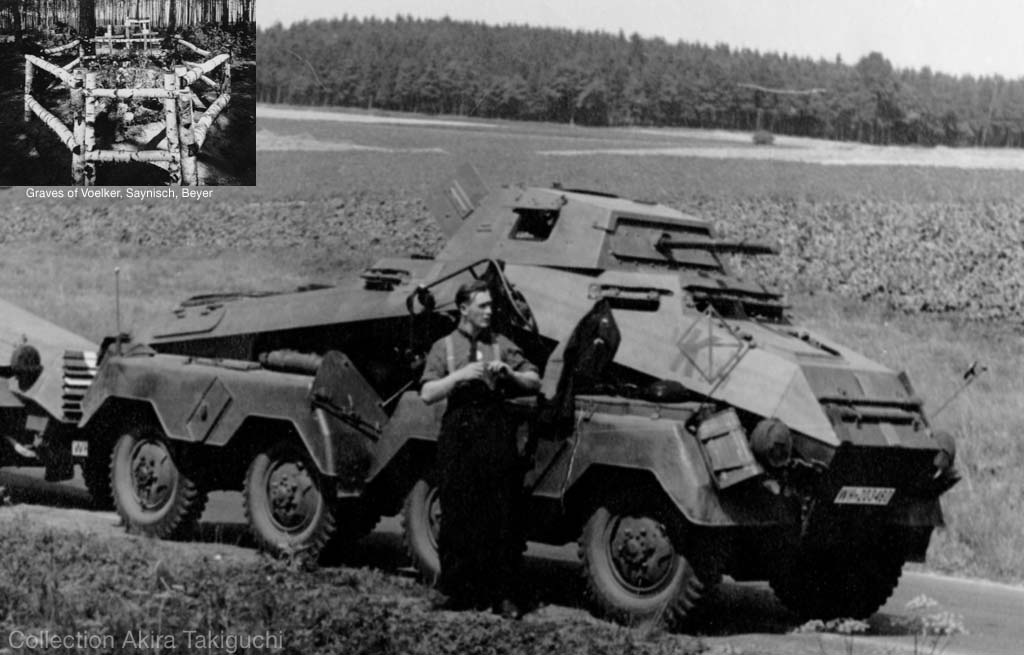Click the image for a larger scan

continued from the previous page
As you can see in the photo of
Köln†,
A.A.4 made it a practice to name its vehicles after name of cities.
Also note the gray-toned cross instead of usual white.
This photo was probably taken before the outbreak of war,
and I guess non-white cross must have had a special meaning.
Another heavy armored car Sd.Kfz.232 (8 Rad),
WH-261793 was named Wiesbaden
(see Panzer-Division 1935-1945 by Michulec, Concord 7033).
This vehicle is illustrated on the cover page of the Abteilung's memorial book.
Also another photograph of a 6 wheeler is known.
4 wheeler armored cars†
painted vehicle name on the frontal armor.
Unlike heavier brothers,
they used
animal names -
in this case Biber.
Also,
Tiger(Sd.Kfz.222, WH-26127 Blitzkrieg in Poland, Sensha Magazine 1984)
and
Wildkatze(Kfz.13, WH-106509 Die 1.Panzer-Division im Bild, Riebenstahl, Podzun-Pallas 1986)
are known.
On this Sd.Kfz.222 is Gefreiter Marquardt,
who later was transferred to A.A.92 (20.Panzer-Division).
Photographs from the french campaign, still with Pz.A.A.4:
rest on the road†,
from the roadside†,
and
inside the parking building†.
These three came from his photo album,
but the first two looks like armored cars from the 2.Panzer-Division (two dots).
I have not found the explanation yet.
He was thrown into Russian battlefield with A.A.92.
The unit was equipped with captured French Panhard armored cars
as shown in this photo†.
A.A.92 suffered heavy casualties in the 1941/42 campaign.
2.Kompanie lost company commander.
Here is a picture from
funeral run†.
Hard-frozen earth of winter Russia must have been demolished to create his grave.
In 1942 Marquardt was again transferred,
this time to Kradschützenabteilung G.D..
Here is a picture of
brand-new 8-wheeled armored car†.
These armored cars carried distinctive marking of an owl (Uhu in German),
because of the commander's name (Usedom) and Hussar tradition (Usedom Hussaren).